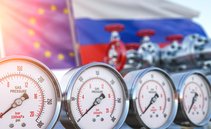Competition to purchase LNG is visible in today’s market, with European benchmark prices recently rising to a nearly six-month high above 37 euros per megawatt hour.

In recent years, Europe has undergone a notable shift in its energy dependence, moving from Russian gas to liquefied natural gas (LNG). This transition was accelerated by sanctions imposed on Russia following its invasion of Ukraine in 2022, a move that highlighted Europe’s vulnerability in terms of energy supply.
Russia, which was the main gas supplier to the continent, has seen its role drastically reduced. Although Europe initially showed some confidence in having viable alternatives, such as LNG, this change introduced a new dependency. Unlike Russian gas, which is mainly supplied through pipelines, LNG arrives by sea and involves much more intense competition on the global market.
In 2022, with the arrival of the first LNG carriers from the United States in European ports, many national and EU leaders cheered having overcome dependence on Russian gas without adverse effects. However, shortly thereafter, French President Emmanuel Macron criticized the United States for the high price of its liquefied gas, bringing to light an issue that many preferred to avoid: cost.
Europe’s membership in Transatlantic LNG has come at a high price and continues to be costly, which is why the continent has not yet fully ceased imports of Russian gas, including LNG flows. The situation could become further complicated with the upcoming closure of the Ukrainian transit route, as Ukraine has announced that it will not renew its transit agreement with Gazprom at the end of the year.
Before Russian President Vladimir Putin ordered the invasion of Ukraine in 2022, Europe depended on Russian gas shipped by pipeline for more than 40% of its imports. LNG accounted for about 20%. But after Moscow largely cut off the flow, the continent’s import dependence has reversed. Last year, LNG accounted for about 42% of Europe’s gas imports, while the Russian pipeline fell to just 8%.
leggi anche
Why Russian gas is still a problem for Europe

Despite assurances from European leaders that the continent will be able to manage without Russian gas, growing dependence on LNG keeps energy prices high, undermining the industrial competitiveness that Brussels is trying to strengthen. In May, gas flow data showed a substantial 39% increase in Gazprom’s exports to Europe compared to the previous year, highlighting the continent’s continued dependence on Russian gas.
The European energy crisis is far from resolved. While mild weather conditions in recent winters have helped, El Niño’s beneficial influence is coming to an end. The imminent arrival of La Niña, bringing colder weather conditions, predicts harsher winters, greater demand for gas, and, consequently, even higher prices for energy consumed in Europe.
Competition to purchase LNG is visible in today’s market, with European benchmark prices recently rising to a nearly six-month high above 37 euros ($40) per megawatt hour. Although higher than at any time this year, European gas prices are a fraction of the more than 300 euros reached in August 2022. Prices averaged €20 between 2010 and 2020.
For the foreseeable future, despite the prospects of a new supply of LNG from Qatar and the United States starting from 2025, gas prices are unlikely to align with those of Russian pipelines, which in the past have fueled the industrial growth of ’Europe. Furthermore, new EU legislation on methane emissions for every molecule of natural gas imported will further increase costs, suggesting that a return to sustained economic growth, without massive government support, remains a distant goal.
Original article published on Money.it Italy 2024-06-29 07:11:00. Original title: Con il GNL americano, la crisi energetica europea è tutt’altro che risolta




